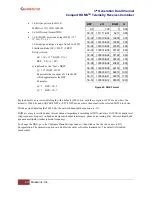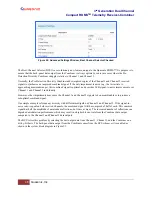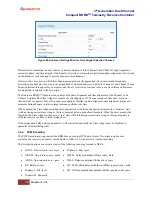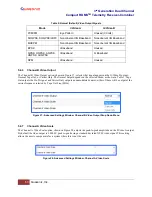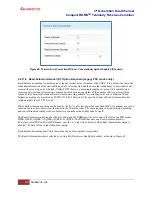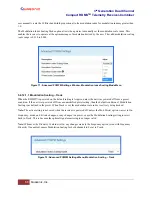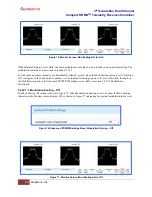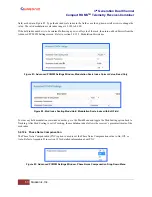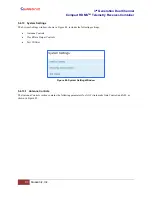
3
rd
Generation Dual Channel
Compact RDMS
TM
Telemetry Receiver-Combiner
51
Quasonix, Inc.
5.4.8
Channel B Video Scale
The Channel B Video Scale option, shown in Figure 59, adjusts the peak-to-peak amplitude on the Q/Video B
output. By default the video output is 1.0000 V peak-to-peak using a standard deviated NTSC video signal. This
setting allows the user to compensate for a system where this is not the case.
Figure 59: Advanced Settings Window, Channel B Video Scale
5.4.9
Tape Output Frequency
The Tape Out Frequency option, shown in Figure 60, sets the carrier frequency for any video output that is set to
Tape Output or Carrier Only. The frequency may be selected from a standard set of values. Alternatively, any
frequency up to 46.666 MHz may be entered as a custom frequency. Note, however, that frequencies above 30 MHz
will experience filter roll-off and may not be useful.
Figure 60: Advanced Settings Window, Tape Output Frequency
5.4.10 FM De-emphasis (PCM/FM Mode Only)
The FM De-emphasis option, shown in Figure 61, is used to set the FM De-emphasis value to NTSC, PAL, or Off.
This option should be used when a corresponding video pre-emphasis filter is used on the video transmit side.
Figure 61: Advanced Settings Window, FM De-emphasis
5.4.11 Forward Error Correction
Forward Error Correction (FEC) may be accomplished by using Low-Density Parity Check (LDPC) encoding, in
SOQPSK or STC modes, as shown in Figure 63 and in Figure 64, or by using Convolutional encoding/Viterbi
decoding, and/or ReedSolomon encoding in legacy PSK modes (BPSK, QPSK, OQPSK, AQPSK, AUQPSK, or
UQPSK), as shown in Figure 62.




